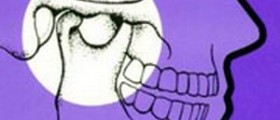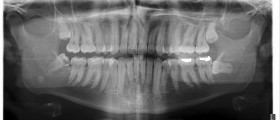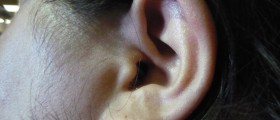
Temporomandibular Disorder Pain
Temporomandibular joint disorder is basically an umbrella term for numerous different types of medical problems which are commonly associated with the temporomandibular joint, the masticatory musculature and other surrounding structures. Painful sensations which commonly accompany the temporomandibular joint disorder can be divided into two main types – the temporomandibular joint pain (which is also referred to as osteoarthritis, capsulitis or synovitis) and the masticatory muscle pain. Painful sensations may also sometimes be in a direct relation to different sorts of dysfunctions of the entire masticatory system such as limitation of movement, locking of the temporomandibular joint, clicking and several others. Facial pain triggered by temporomandibular joint related medical problems commonly affects up to 12 percent of the general population. It is an interesting fact that it affects women twice as much as it affects men. In most cases, the signs and symptoms of temporomandibular joint disorder occur in people who are between 20 and 40 years old. Pain induced by temporomandibular joint related problems may result in significant loss of workdays and may be held responsible for quite an amount of health care related costs.
Causes and Symptoms
Each side of one’s head has its own temporomandibular joint which is located just in front of the ears. Considering the location and its function, there are numerous different types of factors which can be held responsible for the onset of pain in the temporomandibular joint. In most cases the structures around the joint are affected by physical stress, which leads to the onset of pain. The structures in question include the teeth, nearby nerves, nearby blood vessels, nearby ligaments, muscles of the neck, muscles of the face, muscles of the jaw and the cartilage disk at the joint. Among the most common causes of temporomandibular joint disorders are tooth grinding, stress, orthodontic braces, bad bite, poor posture, lack of sleep, poor diet, structural problems present since birth, dislocations, fractures, arthritis and different types of injuries. Temporomandibular joint disorder can easily be characterized by certain types of signs and symptoms. The most common ones among them include a reduced ability to close the mouth, reduced ability to open the mouth, tenderness of the jaw, painful sensations in the jaw, headache, earache, dull aching pain in the face, grating, popping or clicking which occurs when closing or opening the mouth and discomfort or difficulties when chewing and biting.
Diagnosis and Treatment
There are a number of different types of medical specialists which may be required in order to diagnose the temporomandibular joint disorder properly. Those medical specialists include the ear, nose and throat doctor, a dentist and of course the primary care provider. A proper diagnosis requires a vast array of different examinations which may need to be performed. Those examinations may include x-ray scans in order to show any abnormalities, listening, feeling and watching to the opening and closing of the jaw, sliding the teeth from side to side, pressing around the head for areas that may be painful or sensitive, feeling the joint and all the connecting muscles for any signs for tenderness and a dental examination in order to check for any poor bite alignment. The doctors often need to consider any other medical conditions such as headaches, nerve related problems, neuralgias and different types of infections which may be held responsible for the symptoms of the temporomandibular joint disorder. There are different sorts of treatment options available but most initial ones need to be gentle in natures. A steady exercise regime may be of great help when it comes to increasing the ability to handle pain. Various stress reducing techniques and relaxation techniques may also be very helpful. Moist cold and heat packs applied to the affected areas of the face are also known for being beneficial for most cases of temporomandibular joint disorder. All different types of actions which may be triggering the symptoms such as chewing gums, singing or yawning need to be avoided as much as possible. Certain types of medications are often used as a part of treatment plan, and those include corticosteroid shots, antidepressants, muscle relaxant medicines and short use of non steroidal anti inflammatory drugs, naproxen, ibuprofen and acetaminophen. Teeth clenching and teeth grinding may be reduced by bite guards which are also sometimes referred to as splints. One needs to be extra careful because they may worsen the condition in some cases. Rare cases of temporomandibular joint disorders may require joint replacements or reconstructive surgery of the jaw.
Prognosis
The symptoms of the condition may sometimes go away on their own with little or no treatment at all. Some cases of temporomandibular joint disorder may be involved with certain types of complications such as chronic headaches and chronic painful sensations of the face. One needs to avoid chewing gum or eating hard foods very often in order to prevent the temporomandibular joint disorder.














-Arthritis_f_280x120.jpg)


Your thoughts on this
Loading...